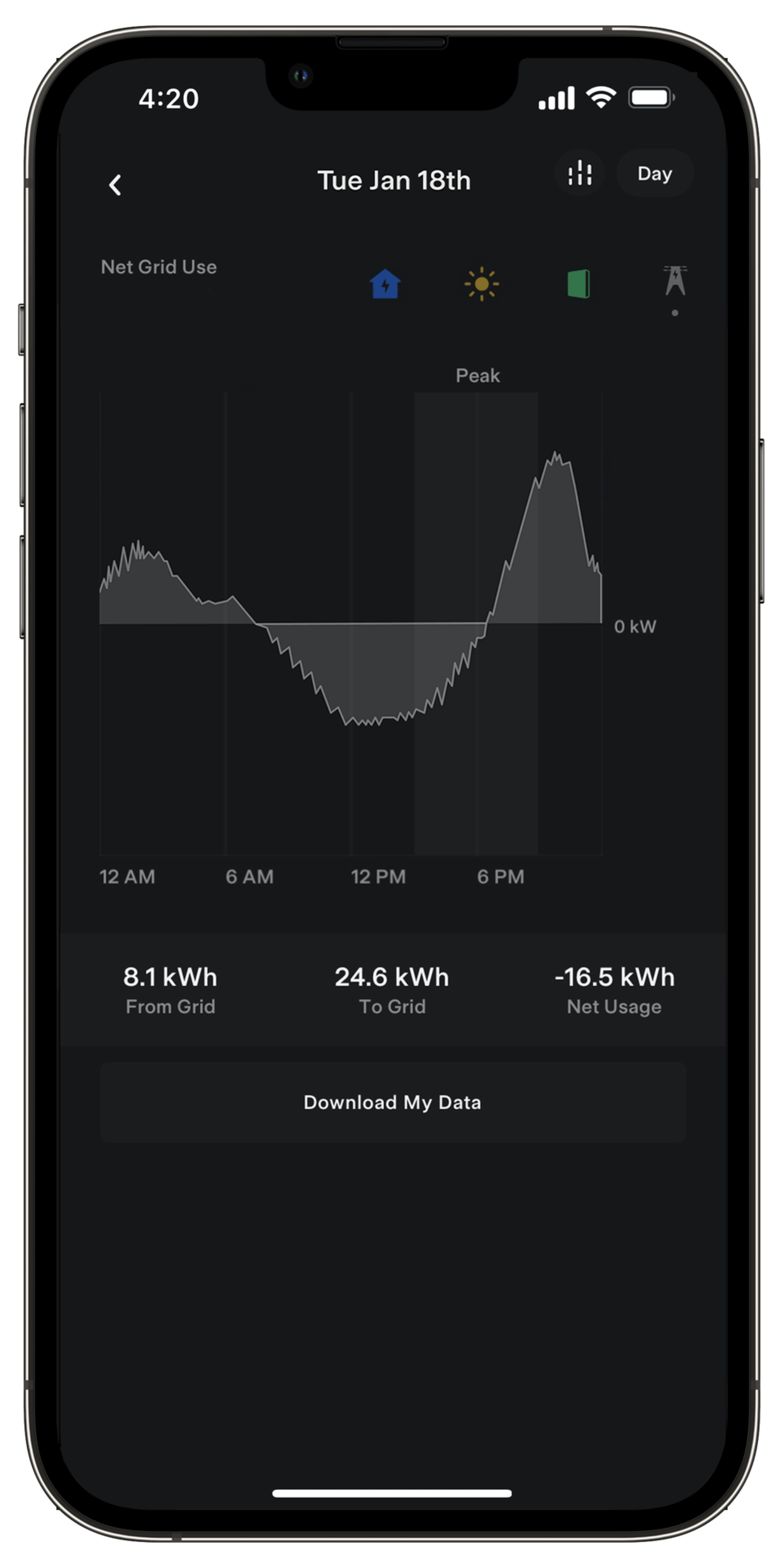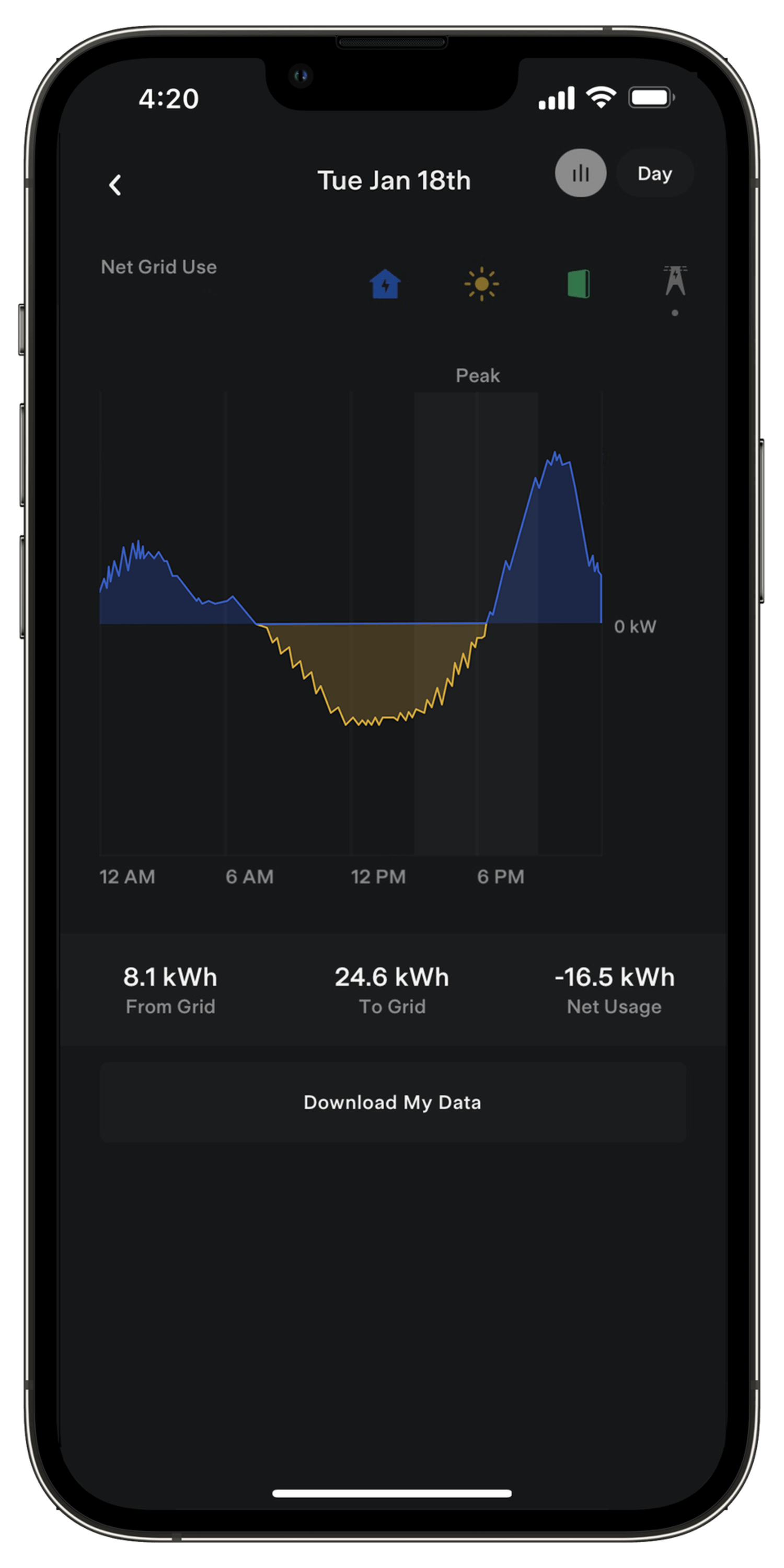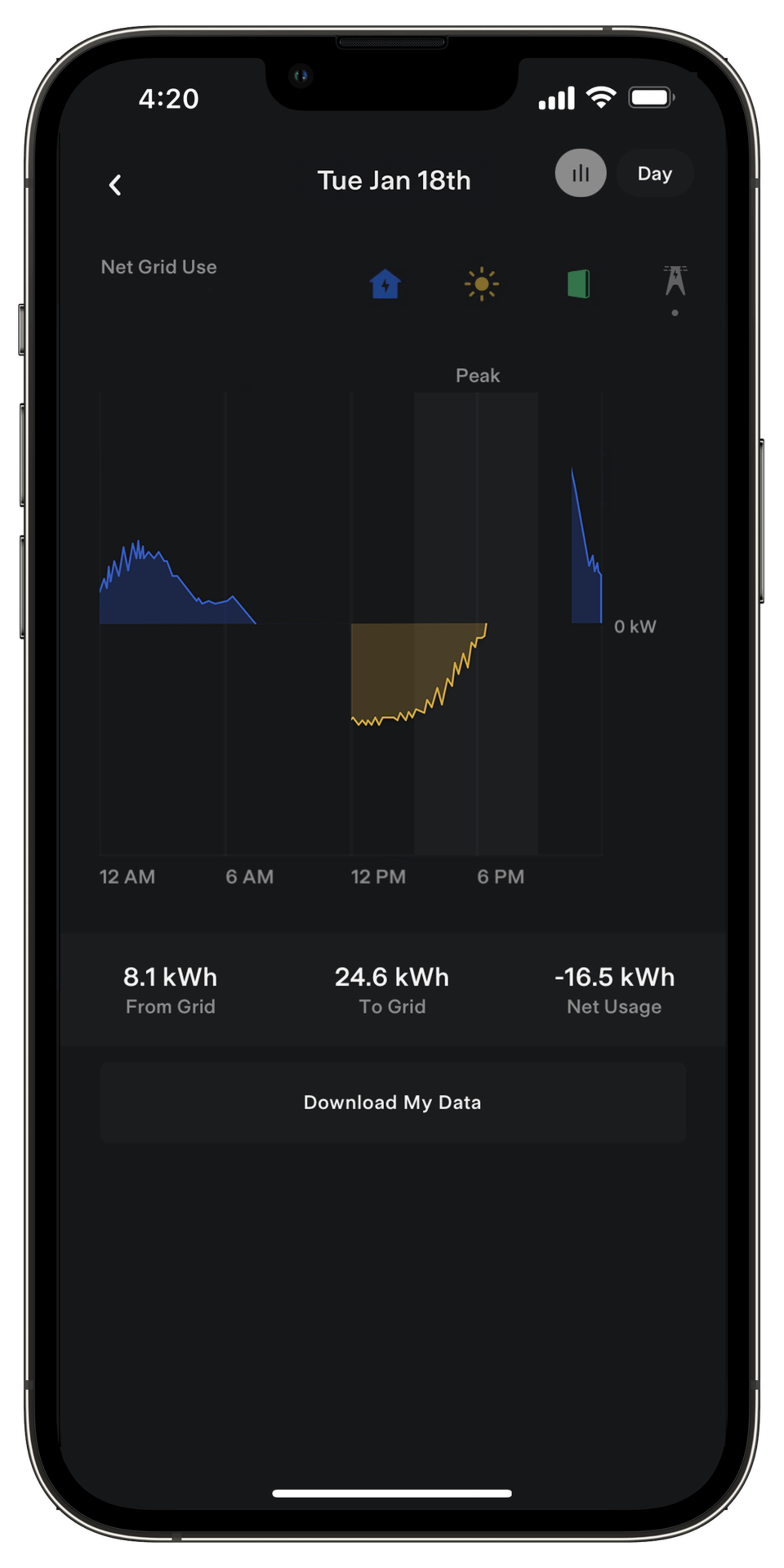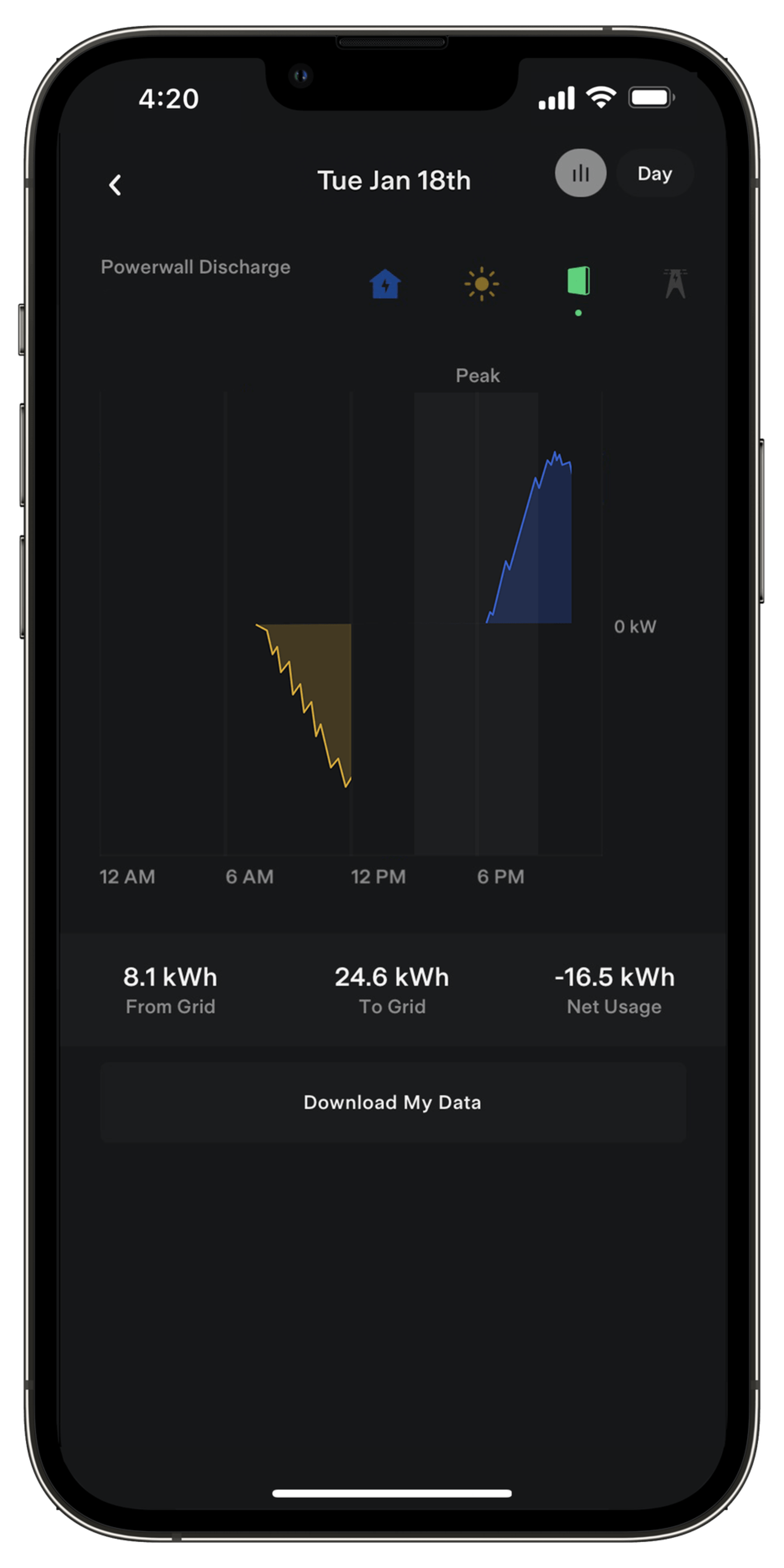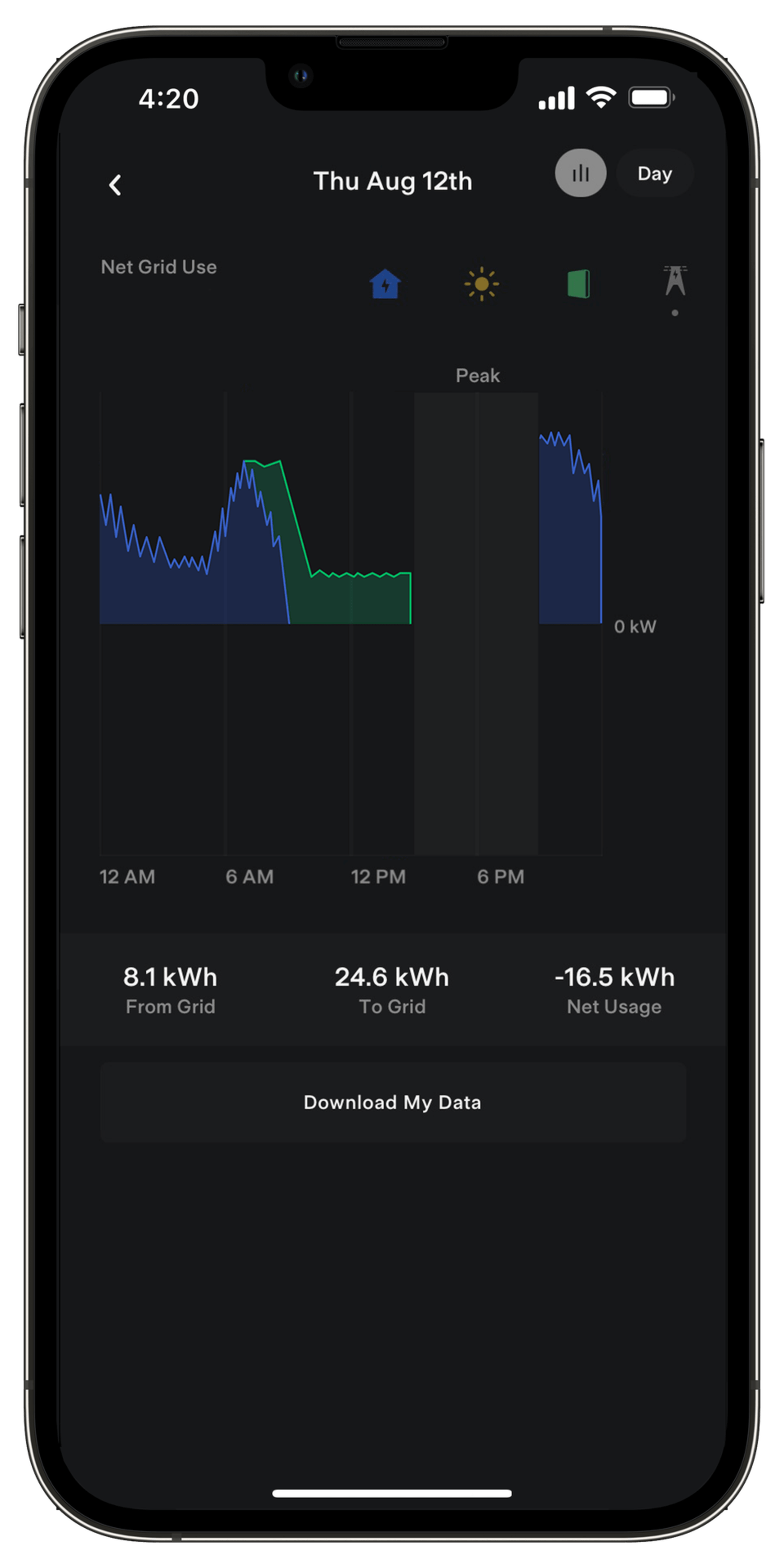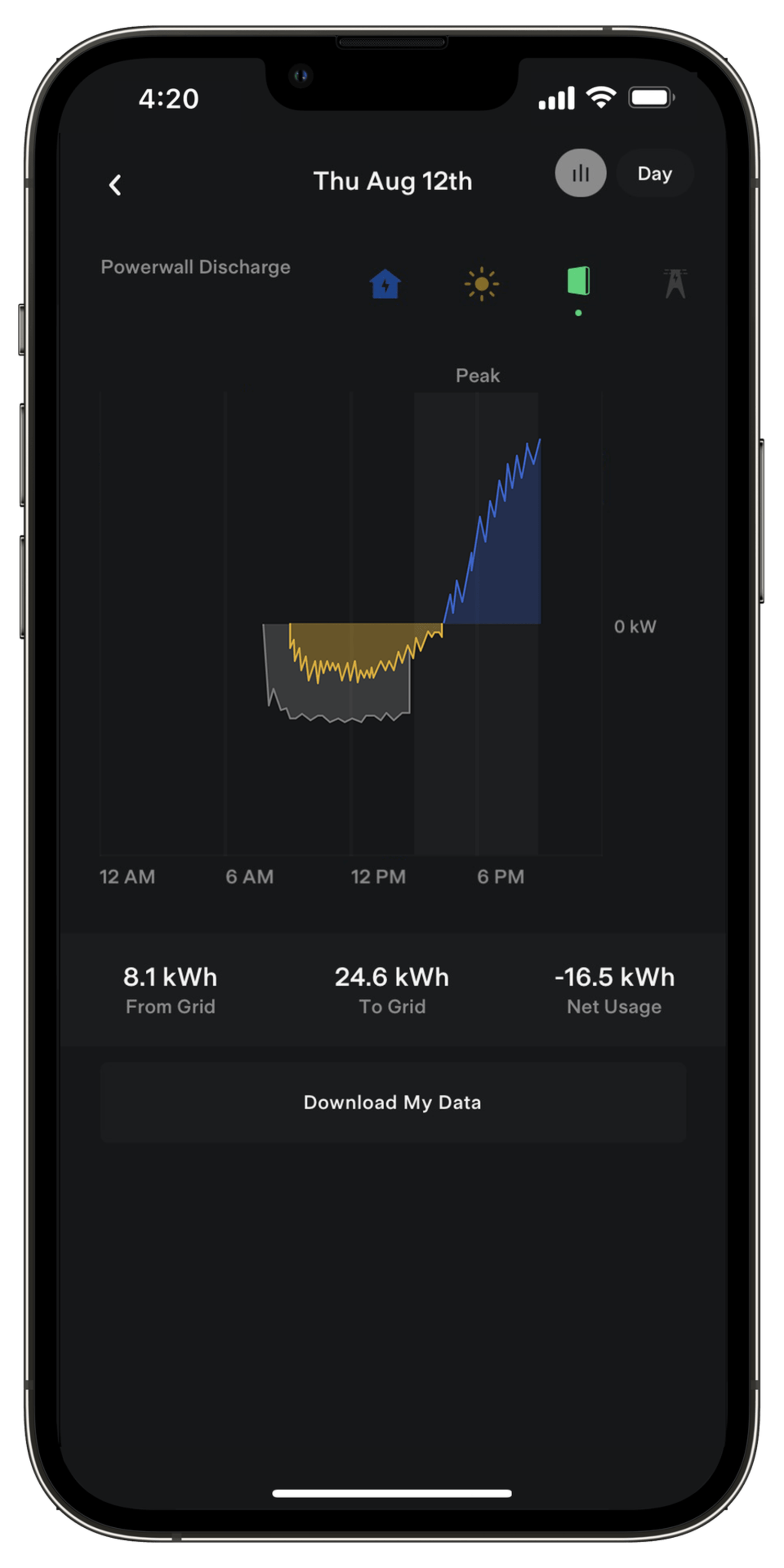Time-Based Control User Guide
Time-Based Control maximizes savings by optimizing how your Powerwall provides power to your home. With Time-Based Control, your Powerwall will charge from and discharge to the grid at certain times to take advantage of changes to utility rates that occur throughout the day and season.
How Your System Will Work
When Time-Based Control mode is enabled, Powerwall uses a technique called energy arbitrage. Energy arbitrage allows Powerwall to store energy when energy prices are low and to sell that low-cost energy back to the grid when energy prices are higher. Powerwall optimizes your charging and discharging behavior for this arbitrage with an energy forecast tailored to your home.
Note: Grid charging and discharging are not available with all utilities. Refer to your Powerwall ‘Settings’ menu to show specific options available to your site.
What is Energy Forecasting and How Does It Work
Powerwall continuously runs an energy forecast, which means Powerwall learns and monitors the patterns of your seasonal energy use and solar production. When there is not enough sun available for your solar production and the forecast shows that you are likely to use energy at a high-cost time (peak period), your Powerwall prioritizes charging during a low-cost time (off-peak period) and discharging during a high-cost time (peak period). This may lead to instances where your Powerwall is idle, as it waits for an optimal opportunity to discharge, resulting in the use of solar or the grid to power your home. This method enables you to keep your energy costs down and to support the grid when energy imports are needed.
Solar Forecasting
Powerwall also uses a solar energy forecast produced using satellite weather data. This forecast is used to predict your solar energy production as the weather changes and also helps Powerwall make better decisions about when to charge and discharge while Time-Based Control mode is enabled. For example, if a forecast predicts significant cloudy weather tomorrow, your Powerwall may be programmed to charge earlier from the grid during a low-cost time period instead of normally charging from excess solar.
Note: Because this smart forecasting needs time to learn about your energy usage, Time-Based Control may not behave as you would expect for the first seven days following installation.
How Time-Based Control Looks in the Tesla App
When in Time-Based Control mode, you can refer to the visuals on the home screen of the Tesla app to better understand how your solar and Powerwall are operating throughout the day. The home screen of the Tesla app for Powerwall and solar displays a live view of power at your home, including solar, Powerwall, grid-use and home power consumption.
The following sequence of screenshots demonstrates a day for a typical Powerwall owner when using Time-Based Control mode. This example shows a home in the summer, where there is excess solar production to be stored in Powerwall for later exports to the grid during peak demand periods.
Note: The exact times and power numbers may differ for your home, but the same concepts still apply.
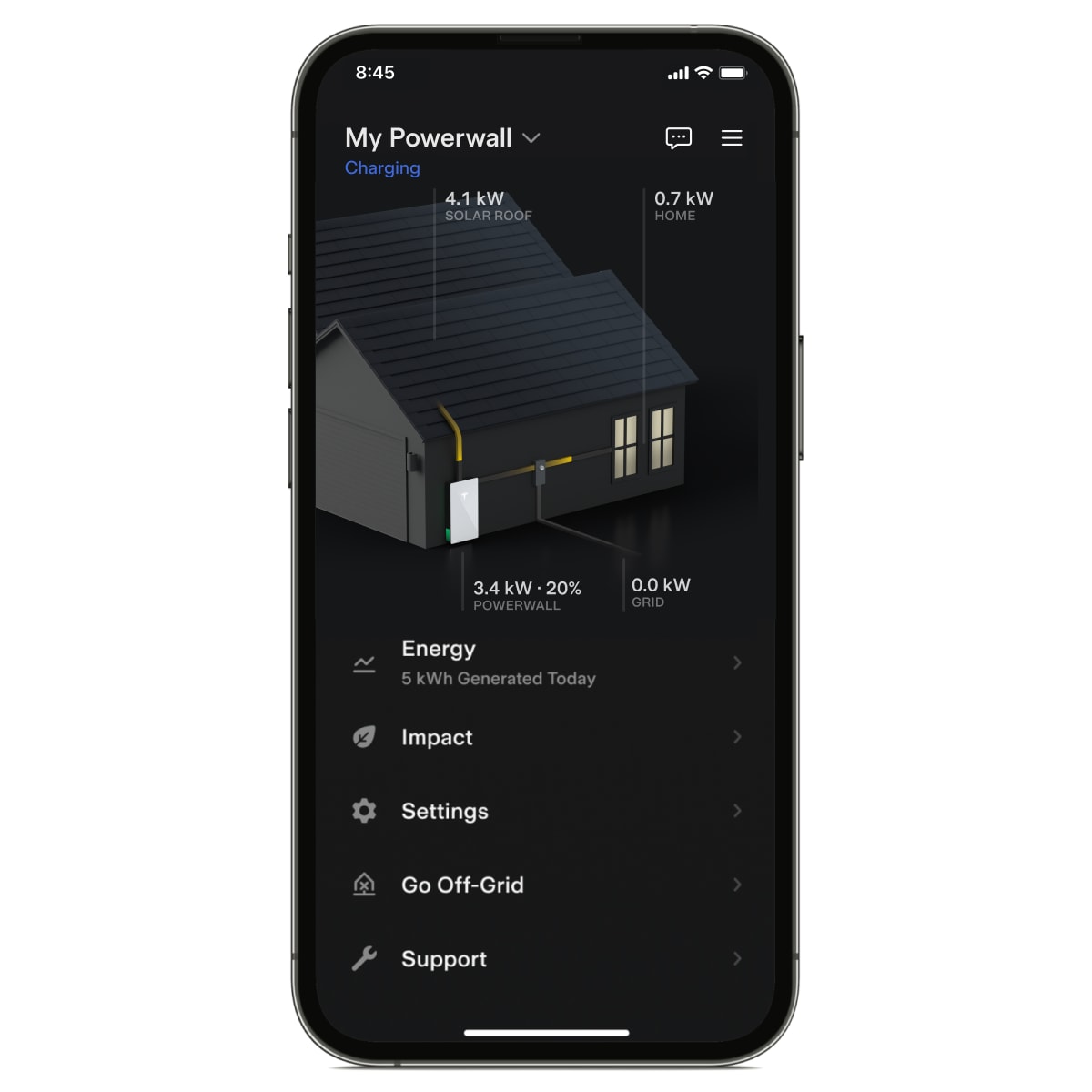
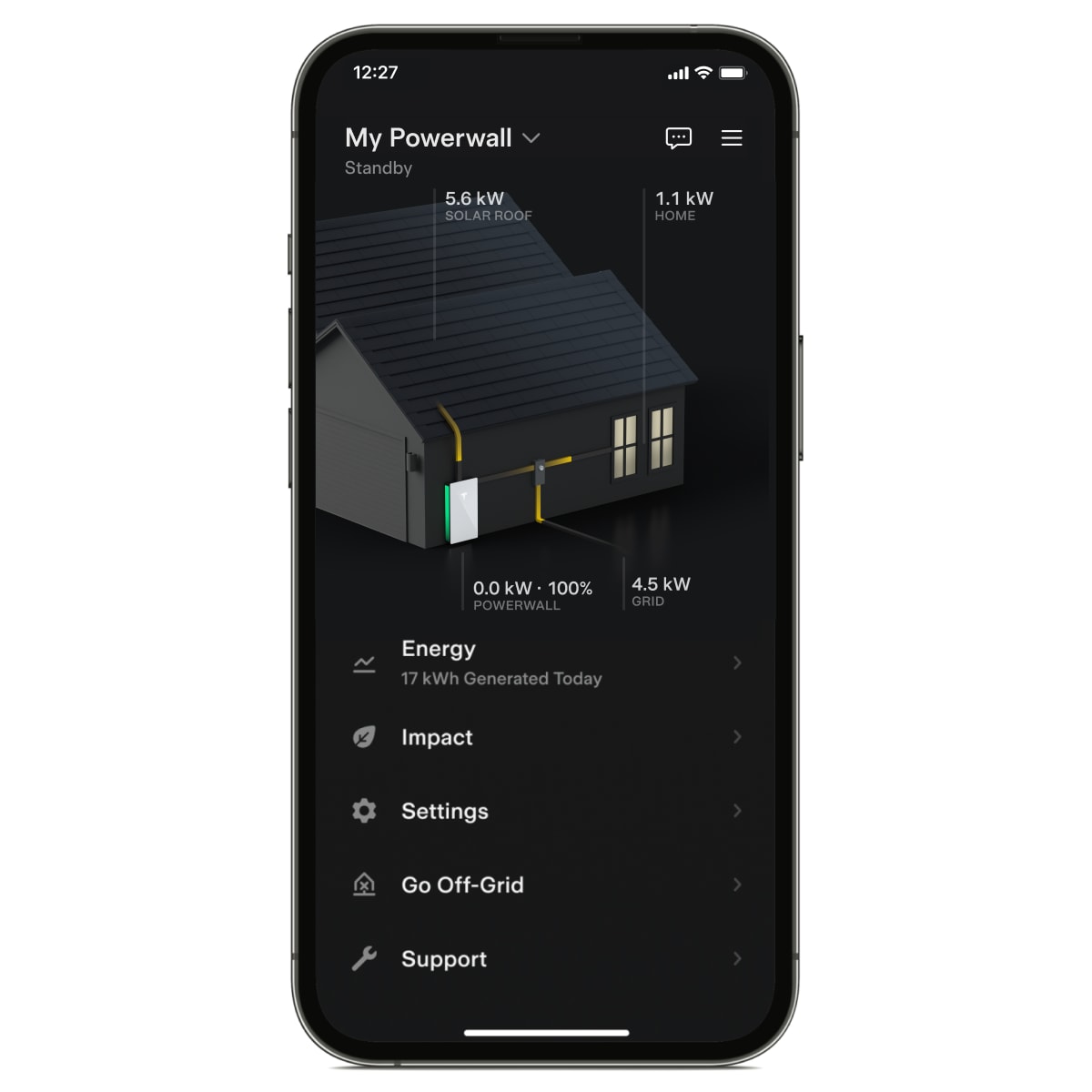
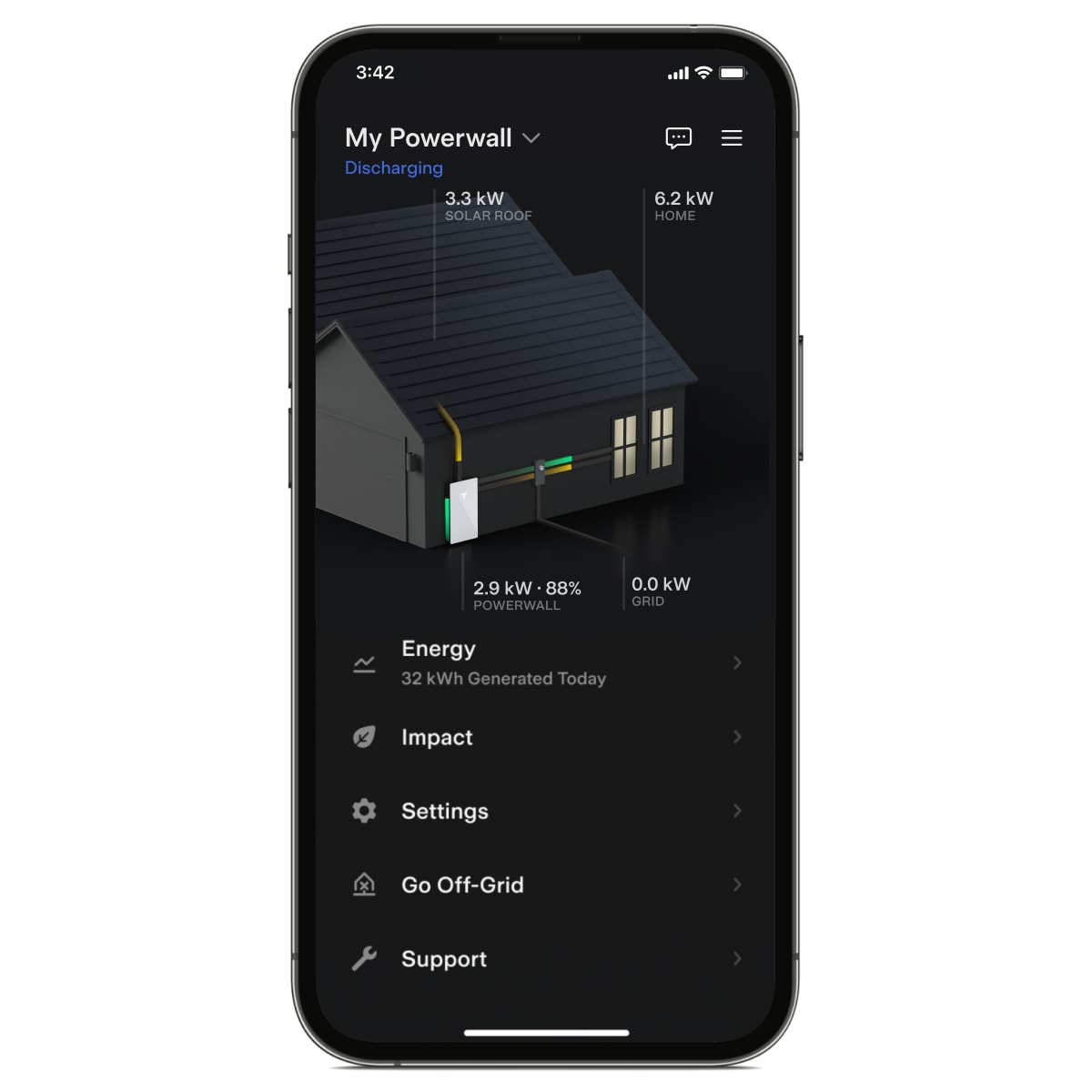
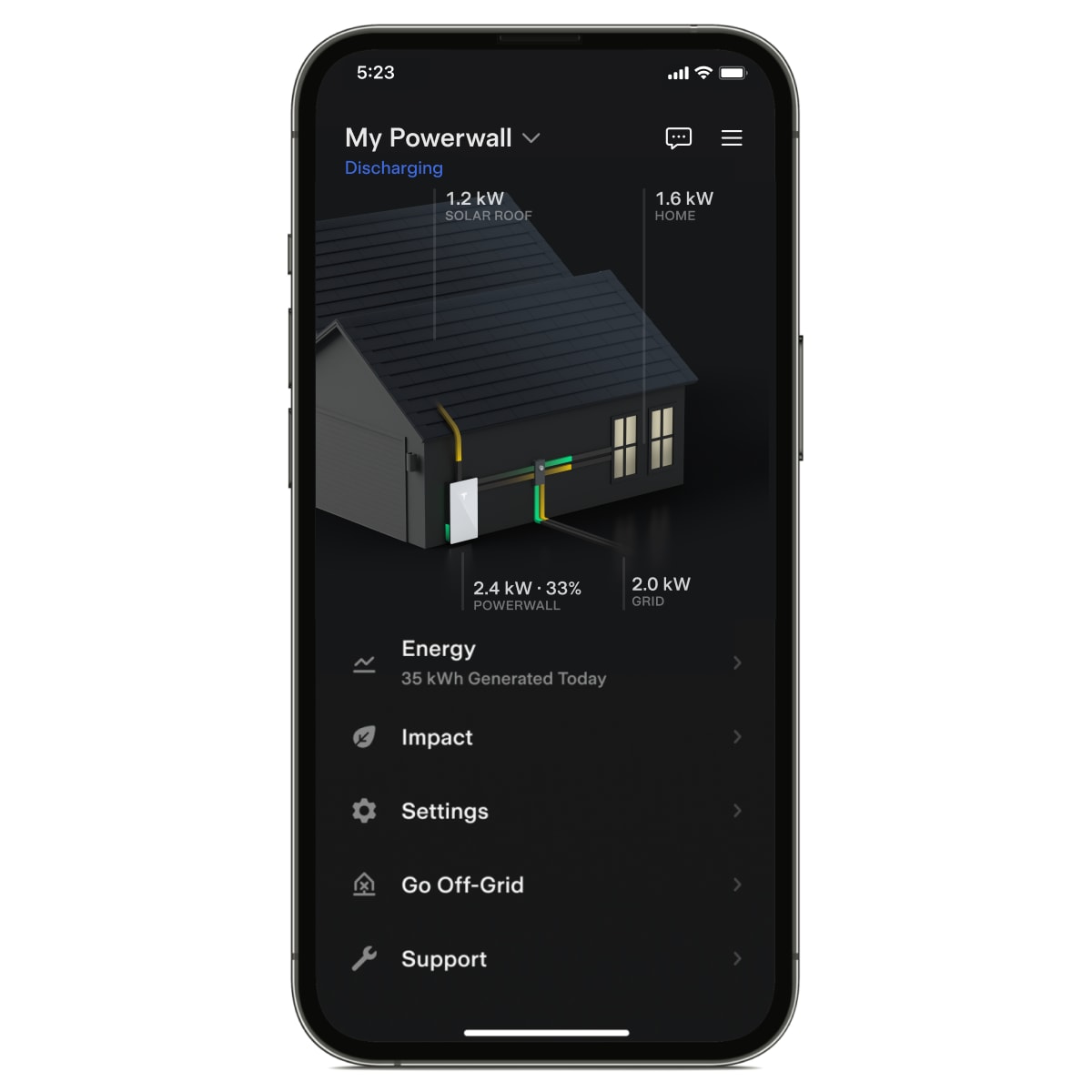
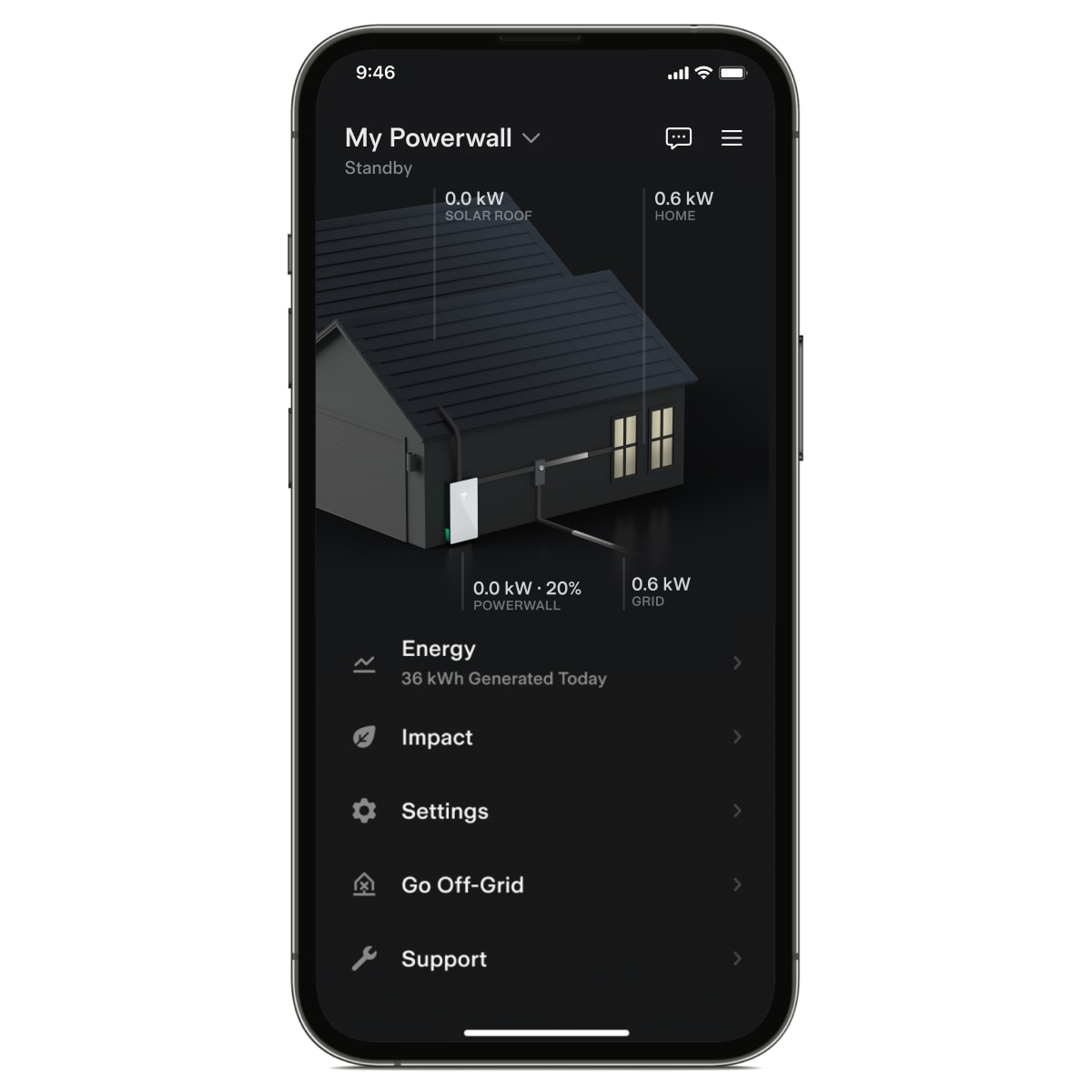
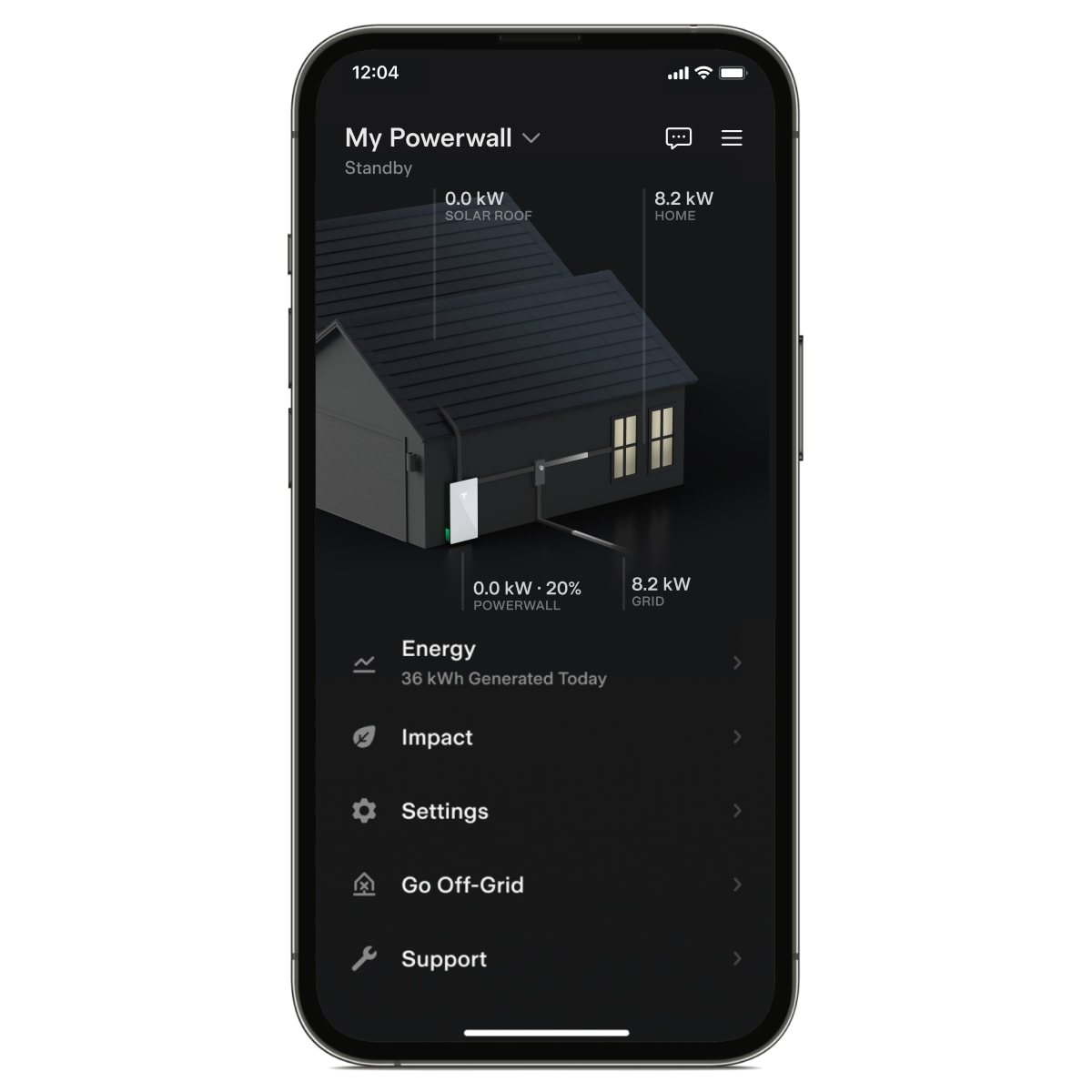
Understanding Energy Flows
The Energy tab in the Tesla app allows you to review system production. You may select each reporting-meter separately or overlap data displayed by tapping the bar-icon next to ‘Day.’ By tapping ‘Day’ you can also change the timescale between ‘Month’, ‘Year’ and ‘Lifetime’ views.
The examples below show what energy usage history could look like for your home with grid and Powerwall to help understand the behavior of Time-Based Control. However, the actual results you see within the Tesla app may differ depending on your energy costs, home energy consumption and daily solar production.
The Energy Graph screenshots show solar and grid components. The grid view shows home usage as a positive value and grid exports as a negative value. The Powerwall view shows discharging to power your home or the grid as a positive value and charging from grid or solar as a negative value.
Time-Based Control: Summer Solar Production
The summer season brings high periods of solar production. Your Powerwall can be seen prioritizing charging from solar to offset peak usage, most often during off-peak.
Solar-Only Without Powerwall
Solar Production With Powerwall
Time-Based Control: Winter Solar Production
With Time-Based Control, Powerwall always tries to maximize your home’s energy value, even during low winter seasonal solar production, which could be less than half of your solar production during the summer. During winter, Powerwall may need to charge more often from the grid to offset your home usage during peak periods, and this charging may occur at different times throughout the day than if it were during summer.
Powerwall takes advantage of low cost, off-peak energy to offset your home’s exposure to peak pricing. This gives you a level of flexibility to select utility rate plans with time-based periods with increased value for your system during all seasons – a value that traditional rate plans don’t offer.
